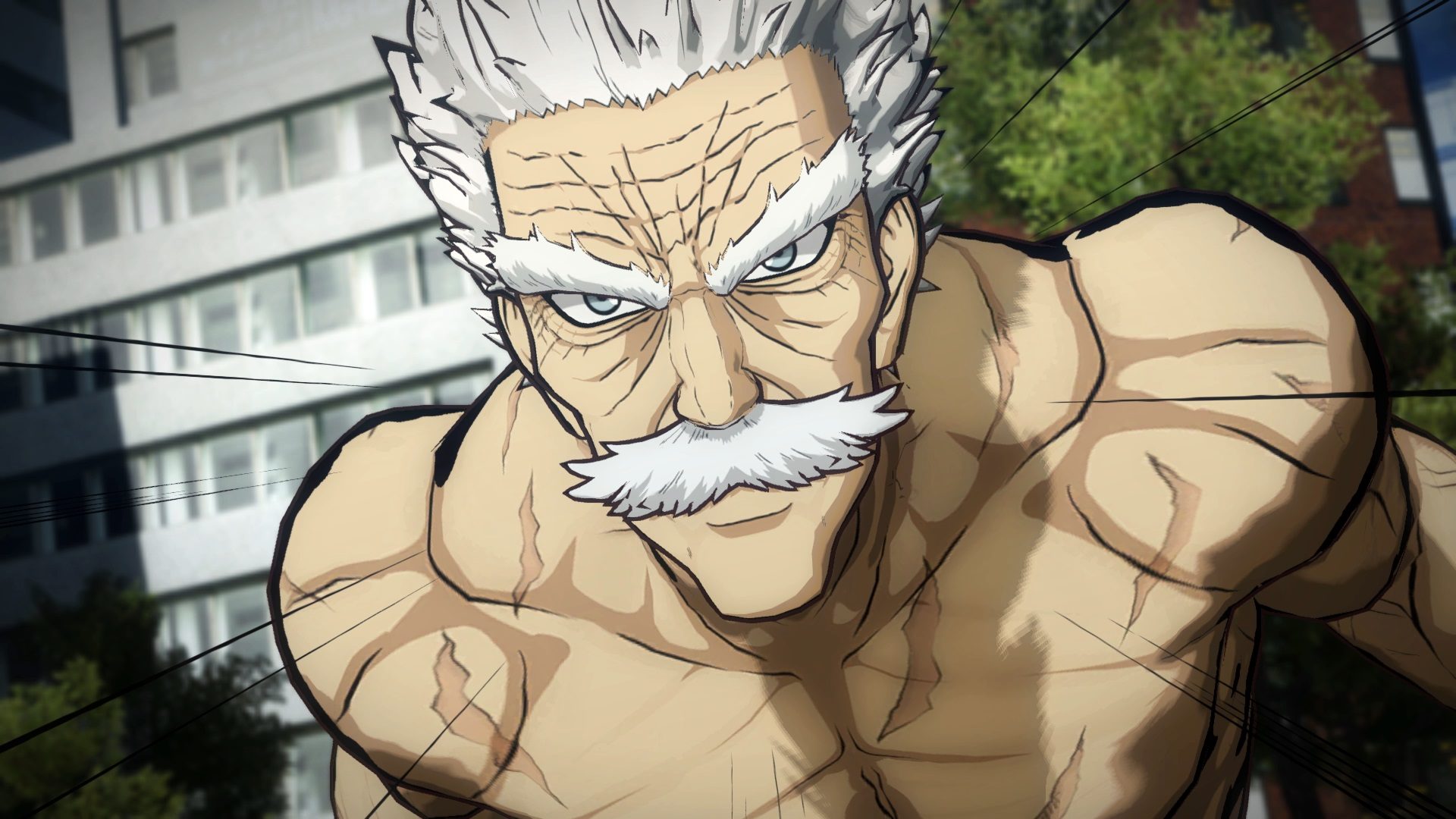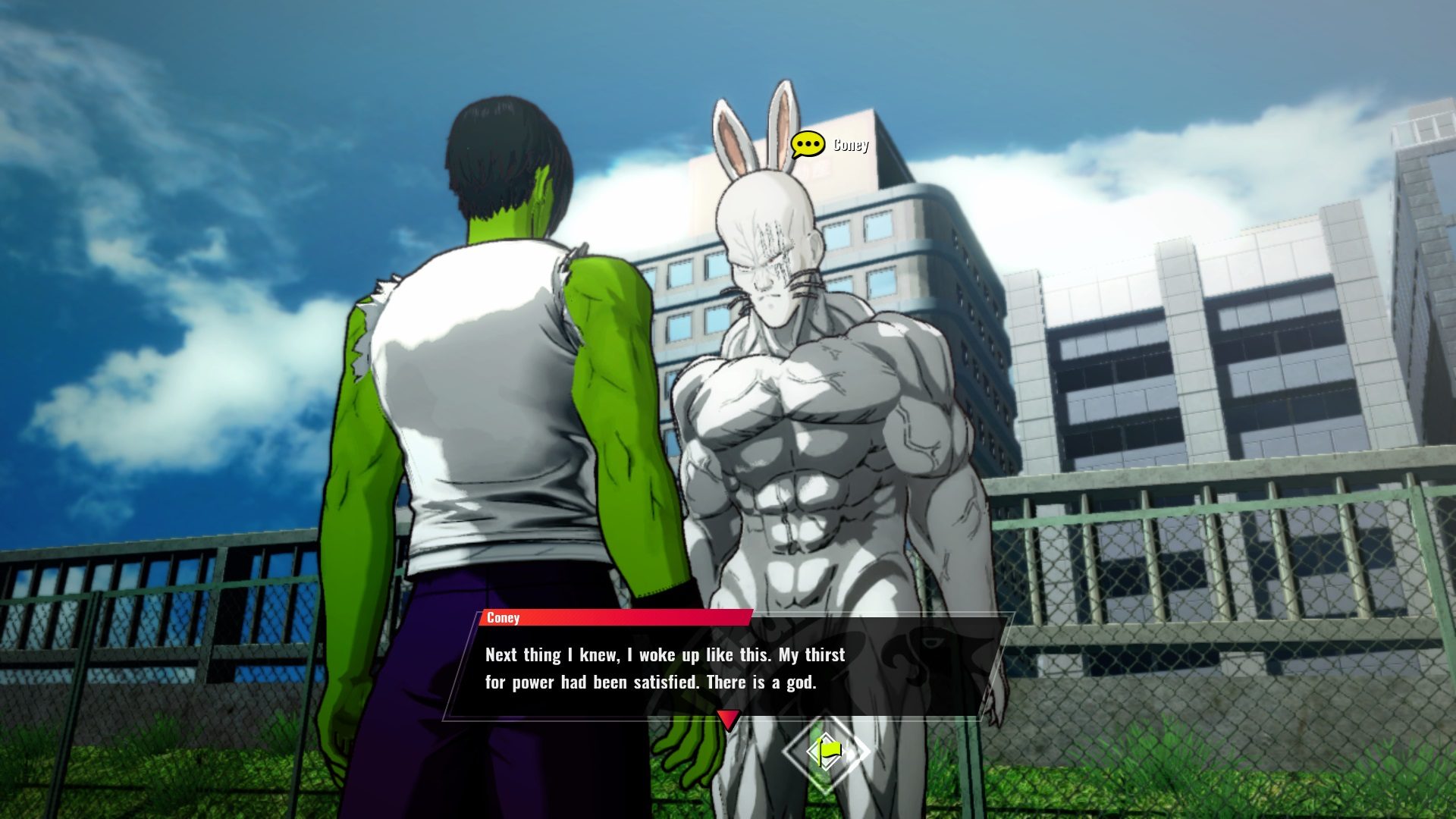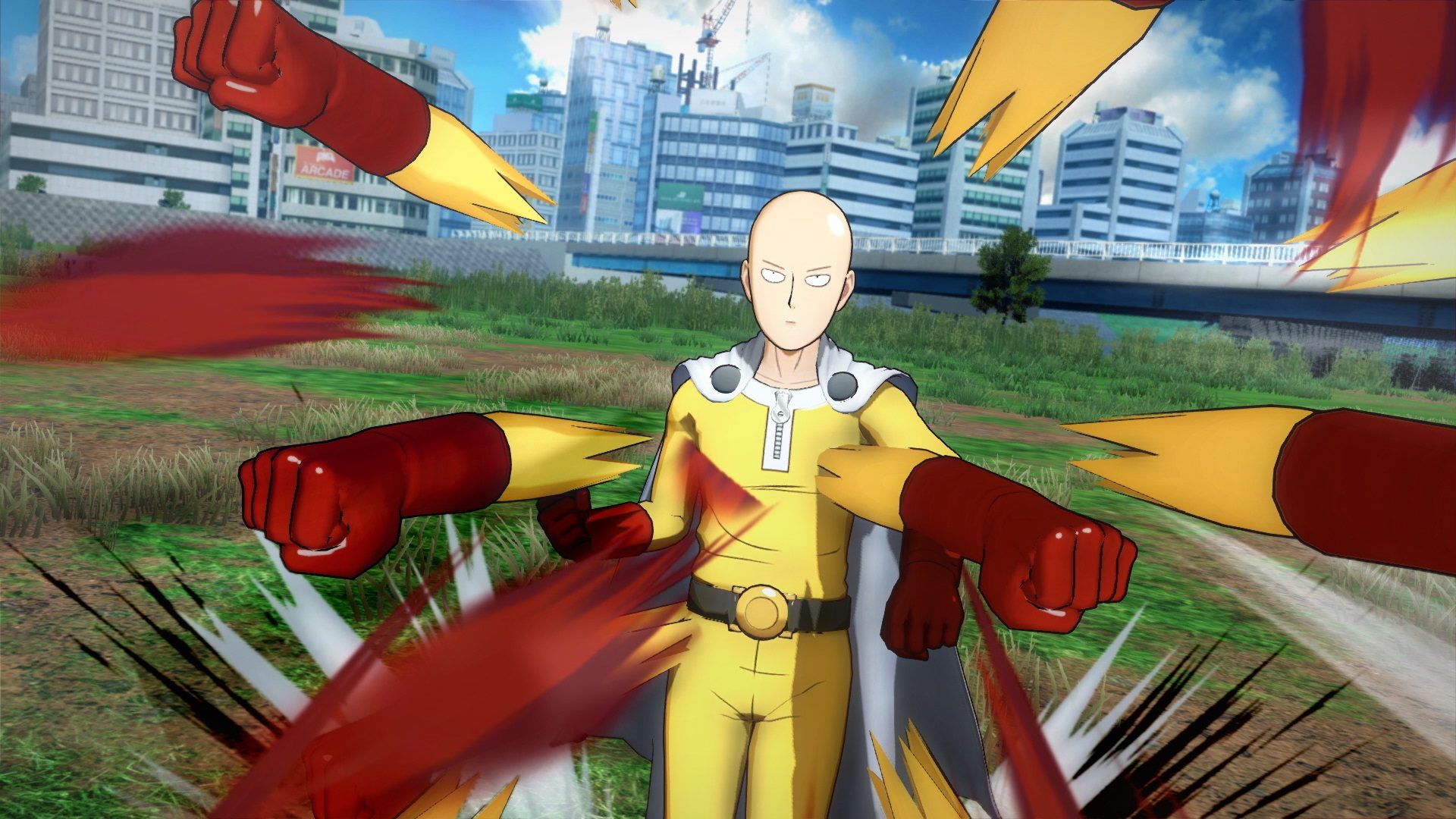Let me be clear: I didn’t have to review One Punch Man: A Hero Nobody Knows. It wasn’t an assignment. I haven’t watched or read any One Punch Man content in the past. I don’t even like fighting games all that much.
What I do like are concepts for games that challenge conventions—and a fighting game about a hero that can defeat his enemies with one punch sounds pretty much like the exact opposite of everything we know about the genre.
Unsurprisingly then, One Punch Man: A Hero Nobody Knows is a game of contradictions. It’s a fighting game with a heavy emphasis on its single-player adventure. Its mechanics are both completely approachable and astonishingly opaque. It’s fun and frustrating, and I’m still not exactly sure if I like it or not.
The main question I had going into One Punch Man was how the hell developer Spike Chunsoft was going to reconcile its namesake with its chosen genre. The answer is, largely, by not letting you play as Saitama, the titular one-punch man.

As the game is largely a single-player experience, Spike Chunsoft has opted to cast you in the role of a created character who wants to be a hero, fight monsters (who are as common as subway rats in One Punch Man’s world), and rise in the ranks of the city’s Hero’s Association. That means you’ll have a mostly mute character (except for a few voice lines during battle) either nodding or shaking their head in response to the other, actual characters from the One Punch Man franchise, who can somehow infer all the nuance of your character rubbing the back of their neck. But it also means that you have the opportunity to build your own hero, choose their fighting style, and upgrade them in a somewhat barebones but still satisfying skill-based RPG system.
Despite an overly long tutorial, the game’s single-player adventure is engaging enough in the beginning, with an emphasis on narrative setup and unlocking the different parts of the explorable hub world. You take on new missions, fight new enemies, and unlock new fighting styles. However, it quickly settles into a repetitive structure in which you complete a story mission (i.e., fight someone) and then raise your reputation by taking on side missions (i.e., fight generic enemies or pick something up for someone and bring it back to them) until your reputation is high enough that you can play another story mission. It’s an obvious ploy to extend the length of the campaign without putting too much effort or enough resources into the storytelling part, and it’s as mind-numbing as it sounds.
To make this even more frustrating, the difficulty levels of the side missions seem wildly uneven. For a while, I was cruising through three-fist (the icon used to indicate difficulty) missions, until I unlocked four- and five-fist missions, which somehow seemed more doable than other three-fist missions. This lack of consistency can be frustrating, especially when you get stuck despite having leveled up your character as much as you possibly can. Sure, part of this halt in progress is due to skill, but when I’m absolutely crushing four-fist missions and still getting annihilated by three-fist missions, that makes me think it isn’t just me. That the game stops unlocking new combat styles after doling them out for the first couple of hours doesn’t help with the game’s pacing, nor with its unexpected spikes in difficulty.
The game’s hub world is another way in which Spike Chunsoft seems to be padding the miniscule amount of content in the game. It’s thankfully just a couple of city blocks, but you will have to briskly jog around the map (not run, jog) if you want to do anything, whether that’s buying a new outfit for your character or taking on a character-specific side quest. Even accessing the game’s multiplayer requires you to travel to the Hero’s Association HQ to visit the appropriate NPC. There’s a catch-22 here: Spike Chunsoft could’ve just let you do this all through menus and save some time, but then the game would seem way slighter than it already does. On the other hand, by forcing players to constantly walk back and forth in the hub world, the developers are mistaking bloat for value and hampering the player’s progress.

When it comes to the actual fighting, One Punch Man is refreshingly accessible while also having some pretty weird mechanics that aren’t explained at all. Combos are simple enough to pull off, but creating setups and stringing together multiple combos feels more improvisational than intentional. Having specific combat styles can lead to some interesting strategies and trade-offs, but the actual movesets within these combat styles can feel limited. You also have access to killer moves, which are special attacks you can pull off after raising your meter during a match, but those can also feel repetitive and the extended animations often give opponents enough time to block if not already stun-locked in a combo. That being said, as someone who isn’t necessarily a fighting game expert, I did enjoy figuring out interesting ways to put together combos and configure otherwise simple tasks like crossovers.
Things get a lot more interesting when you actually fight against other players online. One Punch Man uses a team-based system in which each player picks three fighters who you can swap out at any time. You can choose from any of the characters you unlock during the campaign (again, forcing you to play the single-player content), and that includes Saitama.
This is what I was most looking forward to when reviewing One Punch Man. If you put Saitama on your team, you won’t have access to him for the first five minutes of the match, meaning that if your other two characters get knocked out before Saitama arrives, you lose. However, if you can last that long, Saitama arrives and you can one-hit kill your enemy’s team without taking damage, but if there are two Saitamas, they fight each other like normal.
This system leads to some pretty interesting soul-searching. Do I want to risk getting knocked out early for the chance of using Saitama? What are the chances that my opponent will also choose a Saitama? Even if you choose a Saitama, there’s an incentive to play aggressively and not just run around for five seconds, as each successful combo you land knocks a few seconds off the amount of time it takes for Saitama to arrive. It’s a surprisingly fun meta, and something that I would love to see in a more competitive setting. I doubt One Punch Man: A Hero Nobody Knows will make it to EVO, but I can dream, damn it.
I know I’m making it sound like One Punch Man: A Hero Nobody Knows is just another (seemingly) low-budget anime game with one really weird and interesting mechanic, and that’s because it is. But there’s just something charming and goofy about the game that makes me want to keep playing. In the same way that Saitama’s bald head, yellow pajamas, red gloves, and white cape transfix me, a look that is both effortless and iconic, A Hero Nobody Knows transfixes me by being both totally uninspired and surprisingly bold with its design choices.

All images: Bandai Namco
|
★★☆☆☆
If not for its uninspired design and lack of effort in the storytelling, One Punch Man: A Hero Nobody Knows might have actually been a good game. Oddly for a fighting game, it focuses almost entirely on its single-player, often to its detriment. But if you can look past the repetitive structure and the uneven pacing, there’s actually some fun combat to be found, and its multiplayer meta is surprisingly addictive. |
Developer Spike Chunsoft Publisher Bandai Namco ESRB T - Teen Release Date 02.27.2020 |
| One Punch Man: A Hero Nobody Knows is available on PlayStation 4, Xbox One and PC. Primary version played was for Xbox One. Product was provided by Bandai Namco for the benefit of this coverage. EGM reviews on a scale of one to five stars. | |

Michael Goroff has written and edited for EGM since 2017. You can follow him on Twitter @gogogoroff.